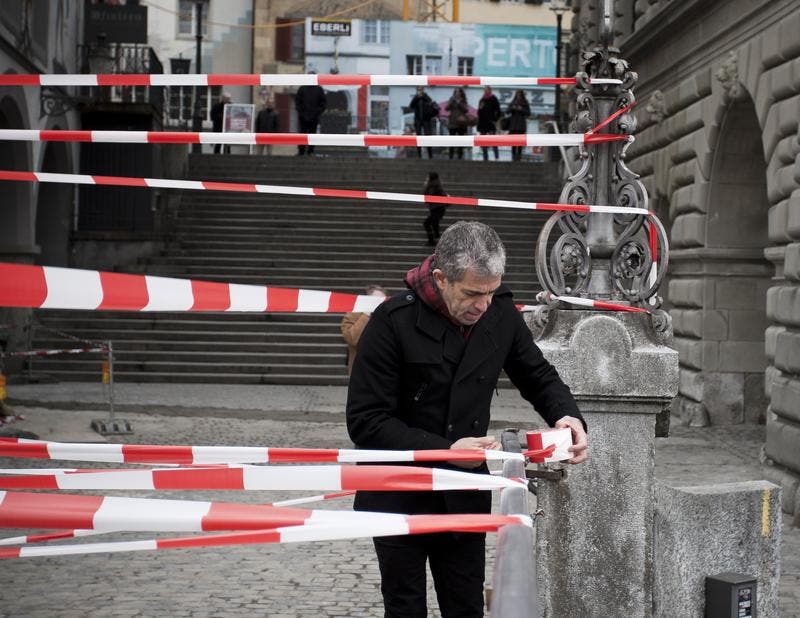


No Exit Lucern 2011
Live Performance using 4000 Meters of Caution Tape
Town Hall Bridge of Lucerne, Switzerland
Surprising reactions of the audience of the performance art project "No Exit Lucerne" by Iranian artist Shahram Entekhabi on the Town Hall Bridge of Lucerne. With caution tape the crossing of the theatre of Lucerne and the town hall was blocked for pedestrians. Amazingly non of the passers-by got upset about the barrier. Only the local authorities filed charges.
See the No Exit performance-video on YouTube

Excerpt from the article in the newspaper:
Luzerner Zeitung on 29 January 2011 Iranischer Künstler sperrt Rathaussteg Ungewöhnliche Kunstaktion mitten in der Stadt Luzern: Ein Iraner sorgte am Freitag für Aufsehen. Illegal.
Da dürften viele Passanten nicht schlecht gestaunt haben: Der Rathaussteg in Luzern war am Freitagmittag um 12.30 Uhr für wenige Minuten gesperrt. Rot-weisses Absperrband war kreuz und quer über die Brücke zwischen dem Luzerner Theater und dem Rathaus gespannt worden. Ein Durchkommen war nur noch schwer möglich. Schuld an der Sperrung war der seit 25 Jahren in Teheran und Berlin tätige iranische Künstler Shahram Entekhabi. Dieser arbeitet seit Jahren mit rot-weissem Absperrband, welches er für Videoperformances und Installationen im öffentlichen Raum benutzt. Sowohl die Stadtbehörden als auch die Luzerner Polizei waren über die Aktion nicht informiert. Eine Bewilligung dafür gab es nicht. Die Stadt wird nun eine Strafanzeige prüfen.
Benno Mattli
Luzerner Zeitung (LZ)
is a Swiss German-language daily newspaper, published in Lucerne.
Shahram Entekhabi also engages in „Parasite Architecture“ which questions aspects of social communication while deconstructing notions of public space and its ownership. Focusing the aspect of the transient within the idea of the informal, Parasite Architecture examines themes of migration and cultural diversity. Hence, in many places around the world, Shahram Entekhabi created informal extensions to existing architectures (e.g. museum architectures) or constructed independent temporary spaces. These informal architectures are always constructed in public space (as part of the Caution performances that are documented on video available on the artist’s website) and they are always made from caution tape - suggesting ideas about safety zones and no-go areas and indicating aspects of exclusivity and inclusivity in the public space. These works deal with the concepts of performance and public space and time. . . .